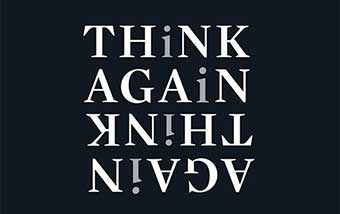Zero Empathy
Gestapo Chief Rudolph Diels: “The infliction of physical punishment is not every man’s job, and naturally we were only too glad to recruit men who were prepared to show no squeamishness at their task. Unfortunately, we knew nothing about the Freudian side of the business, and it was only after a number of instances of unnecessary flogging and meaningless cruelty that I tumbled to the fact that my organization had been attracting all the sadists in Germany and Austria without my knowledge for some time past. It had also been attracting unconscious sadists, i.e. men who did not know themselves that they had sadist leanings until they took part in a flogging. And finally it had been actually creating sadists. For it seems that corporal chastisement ultimately arouses sadistic leanings in apparently normal men and women. Freud might explain it.” In the Garden of Beasts, Erik Larson, 2011.
For Boethius, the 400 AD Roman philosopher, evil is US – we all have capacity for evil, and therefore to combat evil we must look to ourselves and cultivate our goodness. Evil is the absence of good. “We must break the ‘cycle of violence‘. This is the modern view, the enlightenment view, the christian view.
That evil is OTHER, that there is a distinct dualism of good and evil, this is the premodern view, the Manichaean view, the view of Mani, the early 250 A.D. Persian mystic whose ideas rivaled and threatened Roman paganism, and then christianity. Evil is a force to be opposed, to be conquered.
In Science of Evil, psychologist Simon Baron-Cohen finds that evil is a disorder of empathy. We all vary in our ’empathy quotient’. There are those with the ‘continuous, unstoppable drive to empathize‘, and those with lesser empathy. There are components of empathy – recognition and response, feeling and understanding, action and inaction. Failure to act is as significant as not feeling. There is transient empathy erosion, from fatigue, or drugs and alcohol, or depression. There is Groupthink evil, empathy that is over-powered by enthusiasm and solidarity. Nazi gatherings were organized pageants of celebration.
Lack of empathy can be a failure to be good, but it also can be something else. There are those with no empathy. . . at all, zero empathy. For them, lack of empathy is . . . .enjoyment. Serial killers relish their deceit and the knowing terror in their victim’s eyes. Stalin’s greatest joy was to go to sleep knowing that his plans for revenge were unfolding. Nazi evil was beyond efficiency. The Nazi’s precisely engineered emotional as well as physical suffering, over and above the murdering. They practiced this with a sickening aesthetic, an almost artistic intensity.
Empathy by definition is seeing one’s self in others. Those with strong empathy just aren’t likely to perceive, aren’t likely to “empathize” – with the lack of empathy others may have. This asymmetry of awareness empowers those with no empathy to use charm, and to thrive, and the rest is human history.
In Explaining Hitler, 1998, Ron Rosenbaum, in his survey of theories of Hitler, found every reason considered but that Hitler wanted to be evil and do evil things.
“Man is Wolf to Man.”

